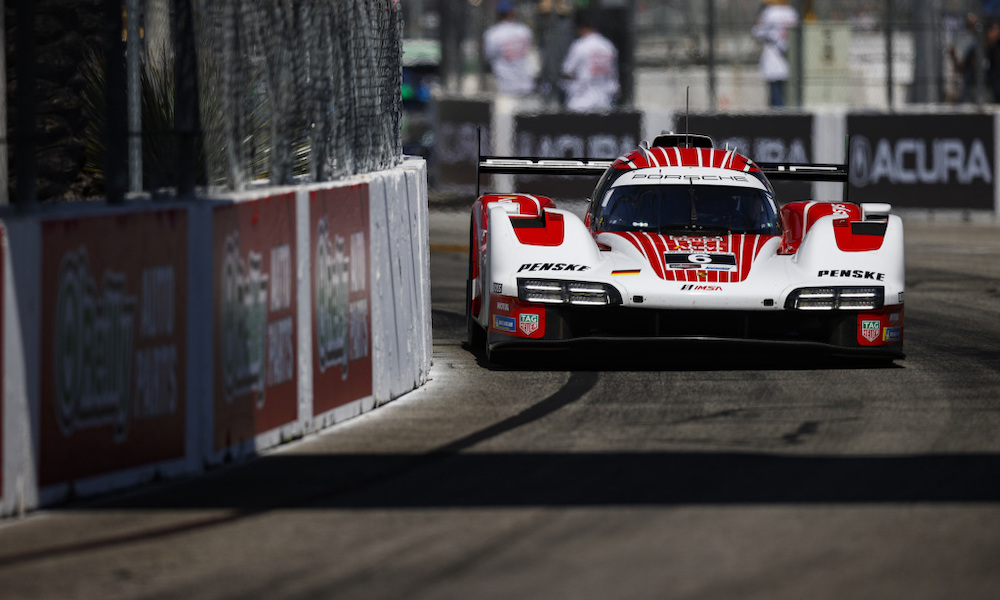
After 24- and 12-hour races to open the season, the third round of the IMSA WeatherTech SportsCar Championship, a two-driver, 100-minute sprint race at the Acura Grand Prix of Long Beach, seems relatively straightforward. A single pit stop for fuel and driver change, and perhaps tires. But with a fuel stint lasting about an hour under green-flag conditions, there is a 20-minute or so window in which to insert that stop if there are no cautions, so there is certainly room to play with strategy.
“The one negative about is it’s a short distance; so if you make a mistake, it’s very difficult to recover,” explains Porsche Penske Motorsport’s managing director, Jonathan Diuguid.
“I think the positive about that is that fuel and energy window is quite large. So there are opportunities for people to stop and miss traffic and do different things like that, or for partial tire changes, and you’ll have some warm-up differences, because the one thing th at’s always been at the top of the strategy list for Long Beach is track position. We used that to our advantage last year, at least our two-car team, to put both cars in one-two position to sort of control the race. So I think you’ll be seeing some drivers looking at all the opportunities they have in managing traffic and track position. I think that’s where the tire strategy is going to come.”
Last year, PPM chose not to take tires during its pit stop to save itself the warm-up window where the pace is quite slow, giving the Porsche 963 its first win in Grand Touring Prototype (GTP). However, Michelin is bringing a softer tire to Long Beach this year, and drivers expect tire degradation to be higher. Running the full race on a single set seems an unlikely proposition – even last year, at the end of the 100 minutes, the Porsches were well off the pace, but track position and an unsuccessful lunge for the lead by Ricky Taylor left Mathieu Jaminet and Nick Tandy with the victory.
“I think there’s going to be a lot more deg,” says Ricky Taylor, driver of the No. 10 Wayne Taylor Racing with Andretti Acura ARX-06. “Out laps are going to be really strong. I’m not a strategist, but obviously the drivers are always throwing around ideas of, ‘Oh, we should undercut them,’ but everybody’s going to try undercut. So there’s going to be a lot of people defending and then, who goes long… I think there’s definitely going to be people trying different stuff. And it’s not a full two stints, so there’s quite a bit of room to play. And for one stop, it’s going to be pretty exciting, what people do.”